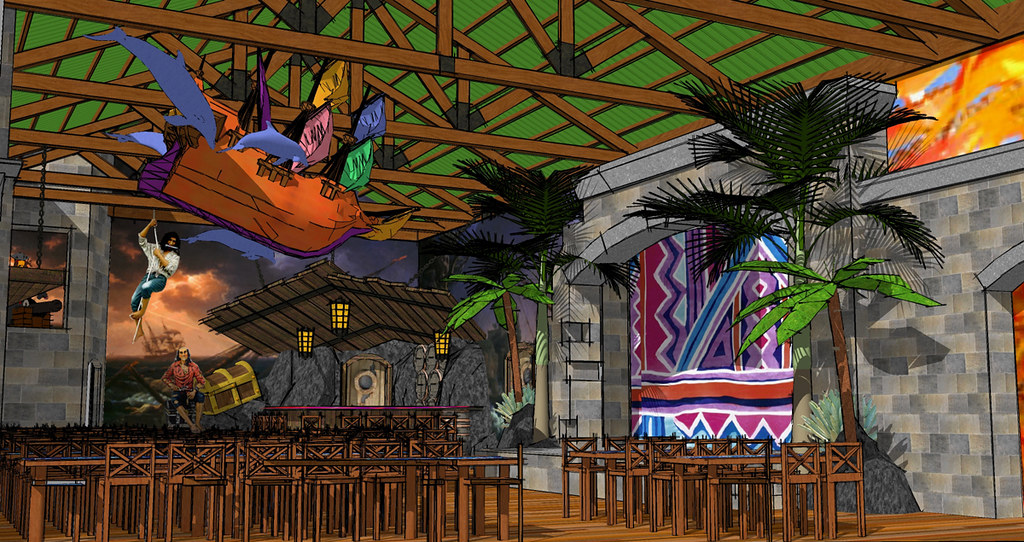Are you ready to bring your animations to life? Whether you’re an aspiring animator or a seasoned pro, mastering the art of animation rigging is the key to creating a lifelike movement that captivates audiences. In this blog post, we’ll dive deep into the world of animation rigging techniques, unlocking secrets that will elevate your characters and creatures from mere pixels on a screen to dynamic beings with personality and soul. Get ready to unleash your creativity as we explore the tools and methods used by industry professionals to achieve stunning realism in every frame. Join us on this thrilling journey as we unlock the secrets behind lifelike movements. It’s time to make your animations truly come alive!
Introduction to Animation Rigging
Animation rigging is an essential aspect of creating lifelike movements in animated characters. It involves the process of building a skeleton or framework for a character, which can then be manipulated to create realistic movements and expressions. This technique is widely used in various forms of animation, including 3D, stop-motion, and even traditional hand-drawn animation.
The purpose of animation rigging is to give animators more control over the movements of their characters, allowing them to create complex and natural-looking motions that would be difficult or impossible to achieve by hand. By using rigs, animators can save time and effort while still producing high-quality animations.
Types of Rigs
There are different types of rigs depending on the type of animation being created. Here are some commonly used types:
- Skeleton Rig – The most basic type of rig that consists of a simple joint chain connected with bones representing each body part.
- Muscle Rig – A more advanced version where muscles are added on top of the skeleton rig to provide more realistic deformations.
- Facial Rig – Used specifically for facial expressions and emotions, this rig has controls for manipulating different parts of the face such as eyebrows, lips, and eyes.
- IK/FK Rig – Inverse Kinematics (IK) allows animators to move an entire limb by simply moving one control point while Forward Kinematics (FK) gives direct control over individual joints.
- Custom Rigs – Depending on the complexity and needs of the animation, custom rigs can be created that combine different types of rigs to achieve the desired result.
Rigging Process
The process of rigging involves several steps, including:
- Character Design – Before creating a rig, it is important to have a fully designed character with detailed drawings or concept art.
- Joint Placement – Joints are placed in the character’s body at specific locations to mimic the movement of real bones.
- Binding – This is the process of connecting the joints to the character’s mesh using a skinning tool.
- Weight Painting – This step involves assigning weight values to different parts of the character’s mesh to control how they move with the rig.
- Controls and Constraints – Various control objects such as FK/IK switches, sliders, and constraints are added to manipulate and animate different parts of the rig.
- Testing and Refining – After setting up the rig, it is important to test its functionality and make any necessary adjustments for smooth movements and realistic deformations.
The Importance of Rigging in Animation
Animation rigging is an essential aspect of the animation process that often goes unnoticed by viewers. However, it plays a crucial role in bringing characters and objects to life on screen. The term “rigging” refers to the process of creating a digital skeleton for 3D models, allowing animators to manipulate them with ease and create lifelike movements.
The importance of rigging in animation cannot be overstated. Without proper rigging techniques, even the most beautifully designed characters and environments can look stiff and unrealistic. Rigging allows for natural movement by providing points of articulation and control over every part of a character’s body or object.
One of the primary advantages of using rigging in animation is its ability to save time and effort for animators. Traditionally, animating each frame manually would be an incredibly tedious task. With the help of rigs, animators can focus on creating believable movements rather than spending hours adjusting each limb separately.
Moreover, rigging also makes it possible for characters to perform complex movements that would be impossible or too difficult to animate manually. For example, flying creatures or robots with multiple limbs would require intricate rig setups to achieve realistic motion.
Another benefit of rigging is its potential for consistency in animation. By establishing a well-structured skeleton and controls, animators can ensure that every movement remains consistent throughout the entire sequence. This helps maintain continuity within a scene and creates a more polished final product.
Furthermore, using advanced rigging techniques such as inverse kinematics (IK) can help speed up the animation process even further. IK allows animators to move a character’s limbs or body part by manipulating a single control rather than each individual joint. This technique is especially useful for creating walk cycles and other repetitive movements.
In addition to character rigging, there is also rigging for environments and props in animation. These elements may not have as many points of articulation as characters but still require proper rigging to ensure they move realistically and interact with other objects in the scene.
Rigging is a vital component of the animation process that allows for lifelike movements, saves time and effort, ensures consistency, and enables complex animations. Without proper rigging techniques, it would be challenging to create believable and engaging animations that captivate audiences.
Understanding the Basics of Rigging: Joints, Bones, and Controls
The process of animation rigging involves creating a digital skeleton for a character and using controls to manipulate its movements. This allows animators to bring their creations to life with lifelike movements and expressions. In this section, we will delve deeper into the basics of rigging, including joints, bones, and controls.
Joints are the building blocks of a rig. They are used to connect different parts of the character’s body and define how they move in relation to each other. Think of joints as the equivalent of real-life human joints such as elbows, knees, hips, etc. These virtual joints can be manipulated by animators through various controls to create fluid movements.
Bones serve as the framework for the character’s body and are connected by joints. They act as a bridge between the joints and the mesh or skin of the character. Bones can come in different shapes and sizes depending on their purpose within the rig. For example, large bones may be used for major body parts such as arms or legs while smaller ones may be used for fingers or facial features.
The placement and orientation of bones is crucial in creating realistic movement in an animated character. The position of each bone determines how it affects neighboring bones when moved by a control. It is important to ensure that bones are placed accurately and follow proper anatomical structures to achieve natural-looking movements.
Controls are what allow animators to manipulate a rigged character’s movements without having to manually adjust every joint or bone individually. Controls typically take on familiar forms such as sliders, knobs, or even on-screen gizmos. These controls can be used to rotate, translate, and scale joints and bones, giving animators a wide range of motion to work with.
There are various types of controls that can be used in rigging, each offering a different level of control over the character’s movements. For example, an FK (forward kinematics) control allows animators to manipulate a joint or bone directly from its endpoint while an IK (inverse kinematics) control allows them to move the endpoint of a chain of joints or bones while keeping the rest of the chain in place.
In addition to controlling movement, controls can also be used to manipulate attributes such as squash and stretch, facial expressions, and other details that add depth and personality to an animated character.
The process of rigging involves creating a hierarchy of joints and bones connected by various controls. This hierarchy is known as the rigging system and is what enables animators to create lifelike movements in their characters.
Understanding the basics of rigging – joints, bones, and controls – is essential for any animator looking to bring their creations to life. By mastering these concepts and techniques, you can create dynamic characters with believable movements and expressions.
Advanced Techniques for Creating Lifelike Movement
Creating lifelike movement is an essential aspect of animation rigging and can greatly enhance the overall quality of your animations. In this section, we will explore some advanced techniques that can help you achieve more natural and realistic movement in your character rigs.
1. Incorporate Secondary Motion:
Secondary motion refers to the extra movements that occur as a result of the primary action. For example, when a character walks, their hair, clothing, and other body parts will have slight movements that add to the overall realism of the animation. To incorporate secondary motion in your rigs, you can use tools like dynamic simulations or blend shapes for smoother and more organic movements.
2. Utilize Advanced IK/FK Switching:
IK (inverse kinematics) and FK (forward kinematics) are two types of rigging methods used for controlling joint movement. While IK provides more natural-looking limb movement, FK offers better control over individual joints. Advanced IK/FK switching allows animators to switch seamlessly between these two methods during an animation without any visible break in continuity.
3. Use Constraints:
Constraints are an essential tool for creating complex and lifelike movements in character rigs. They enable animators to limit the range of motion or define specific relationships between different parts of the rig. For example, a pole vector constraint can be used to ensure that a character’s arm bends in a specific direction while maintaining its position relative to the shoulder joint.
4. Implement Stretchy Limbs:
Stretchy limbs are another useful technique for creating more lifelike movement in rigs. In real life, our limbs can stretch and compress depending on the action being performed. By incorporating stretchy IK or FK controls, you can make your character’s arms and legs appear more elastic and dynamic.
5. Add Squash and Stretch:
Squash and stretch is a fundamental principle of animation that involves exaggerating the shape and size of an object to create a sense of weight, impact, or elasticity. This technique is particularly useful for animating characters with cartoony or exaggerated features, but it can also be applied to more realistic rigs to add subtle nuances to their movements.
6. Use Corrective Blend Shapes:
Corrective blend shapes are pre-made deformations that can be applied over a base mesh to correct any undesirable deformations that may occur during rigging. These shapes can help you achieve smoother movements in areas like joints, facial expressions, and clothing folds.
7. Utilize Motion Capture Data:
Motion capture data involves recording physical movements using specialized equipment and then applying them to a digital character rig. This technique allows for highly realistic animations as it captures the subtleties of human movement that are difficult to replicate manually.
8. Fine-tune Timing and Spacing:
Timing and spacing are crucial elements in creating lifelike movements. Timing refers to the pace of an action, while spacing refers to the distance between poses or keyframes. By carefully adjusting these elements, you can create animations that feel more natural and have a better flow.
9. Refer to Reference Footage:
One of the most effective ways to create realistic movement is by studying and referencing footage of real people performing similar actions. This can help you understand how different body parts move and interact with each other, allowing you to incorporate those nuances into your rig.
Incorporating these advanced techniques into your animation rigs can greatly improve the quality and realism of your character movements. Experiment with different methods and find what works best for your specific project to create truly lifelike animations.
Conclusion
Animation rigging is a complex but crucial aspect of creating lifelike movements in animations. With the right techniques and knowledge, one can master this art and bring characters to life on screen. From understanding the principles of rigging to using advanced tools and software, there are various ways to achieve realistic movements in animation. By continuously honing your skills and staying updated with new technology, you can truly become an expert at animation rigging. So go ahead and practice these techniques, experiment with different methods, and see your animated characters come to life like never before!





